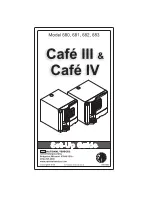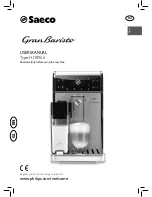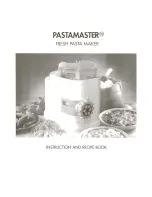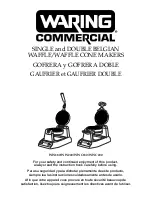
23
INGREDIENTS
Fats and oils:
fats make the bread softer and
tastier. It also stores better and longer. Too
much fat slows down rising. If you use butter,
cut it into tiny pieces so that it is distributed
evenly throughout the preparation, or soften
it. You can substitute 15g butter for 1 tables-
poon of oil. Do not add hot butter. Keep the
fat from coming into contact with the yeast,
as fat can prevent yeast from rehydrating. Do
not use low fat spreads or butter substitutes.
Eggs:
eggs make the dough richer, improve the
colour of the bread and encourage the develop-
ment of the soft, white part. If you use eggs,
reduce the quantity of liquid you use propor-
tionally. Break the egg and top up with the li-
quid until you reach the quantity of liquid
indicated in the recipe. Recipes are designed
for one 50 g size egg; if your eggs are bigger,
add a little flour; if they are smaller, use less
flour.
Milk:
recipes use either fresh or powdered milk.
If using powdered milk, add the quantity of
water stated in the recipe. It enhances the fla-
vour and improves the keeping qualities of the
bread. For recipes using fresh milk, you can
substitute some of it with water but the total
volume must equal the quantity stated in the re-
cipe. Semi-skimmed or skimmed milk is best to
avoid bread having a close texture. Milk also has
an emulsifying effect which evens out its airi-
ness, giving the soft, white part a better aspect.
Water:
water rehydrates and activates the
yeast. It also hydrates the starch in the flour
and helps the soft, white part to form. Water
can be totally or partially replaced with milk or
other liquids. Use liquids at room temperature.
Flour:
the weight of the flour varies signifi-
cantly depending on the type of flour used. De-
pending on the quality of the flour, baking
results may also vary. Keep flour in a hermeti-
cally sealed container, as flour reacts to fluc-
tuations in atmospheric conditions, absorbing
moisture or losing it. Use “strong flour”, “bread
flour” or “baker’s flour” rather than standard
flour. Adding oats, bran, wheat germ, rye or
whole grains to the bread dough will give a
smaller, heavier loaf of bread.
Using T55 flour is recommended unless
otherwise specified in the recipe. If you are
using special flour blends for bread, brioche
or rolls, do not exceed 1 kg of dough in
total.
Sifting the flour also affects the results: the
more the flour is whole (i.e. the more of the
outer envelope of the wheat it contains), the
less the dough will rise and the denser the
bread. You can also find ready-to-use bread
preparations on the market. Follow the manu-
facturer’s instructions when using these prepa-
rations. Usually, the choice of the programme
will depend on the preparation used. For exam-
ple: Wholemeal bread - Programme 3.
Sugar:
use white sugar, brown sugar or honey.
Do not use unrefined sugar or lumps. Sugar
acts as food for the yeast, gives the bread its
good taste and improves browning of the crust.
Artificial sweeteners cannot be substituted for
sugar as the yeast will not react with them.
Salt:
salt gives taste to food and regulates the
yeast’s activity. It should not come into
contact with the yeast. Thanks to salt, the
dough is firm, compact and does not rise too
quickly. It also improves the structure of the
dough. Use ordinary table salt. Do not use co-
arse salt or salt substitutes.
Yeast:
baker’s yeast exists in several forms:
fresh in small cubes, dried and active to be re-
hydrated or dried and instant. Fresh yeast is
sold in supermarkets (bakery or fresh produce
departments), but you can also buy fresh yeast
from your local baker’s. In its fresh or instant
dried form, yeast should be added directly to
the baking pan of your breadmaker with the
MLX-OW3022-NC00020774_MLX-OW3022-NC00020774 21/12/10 15:52 Page23

































